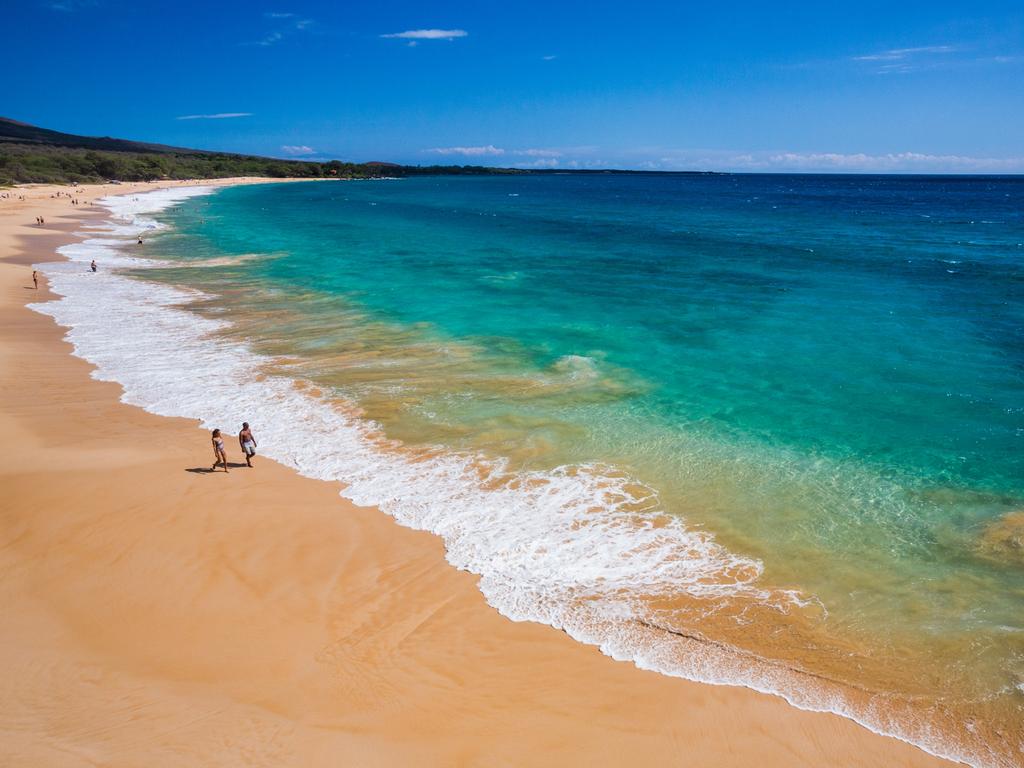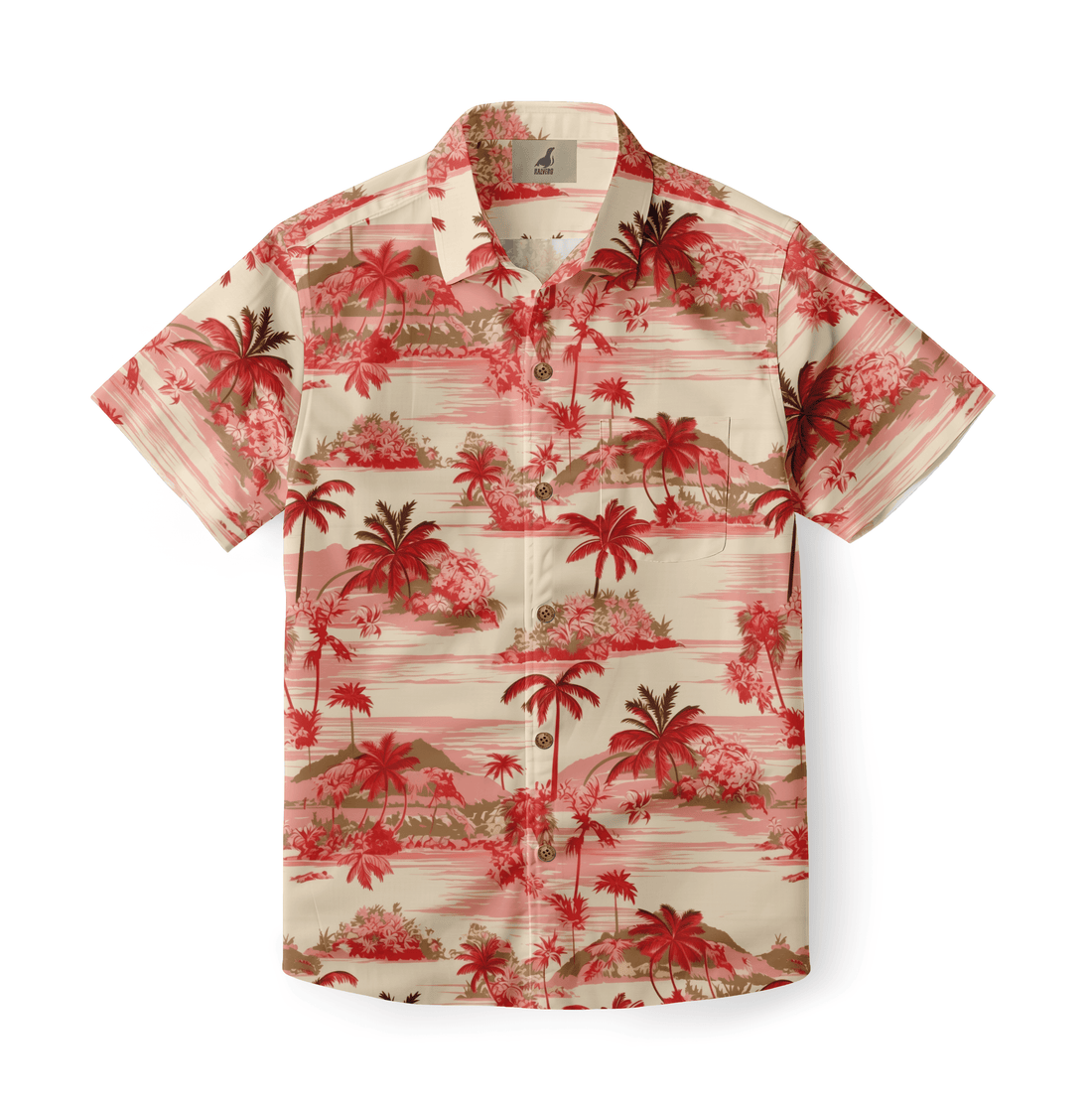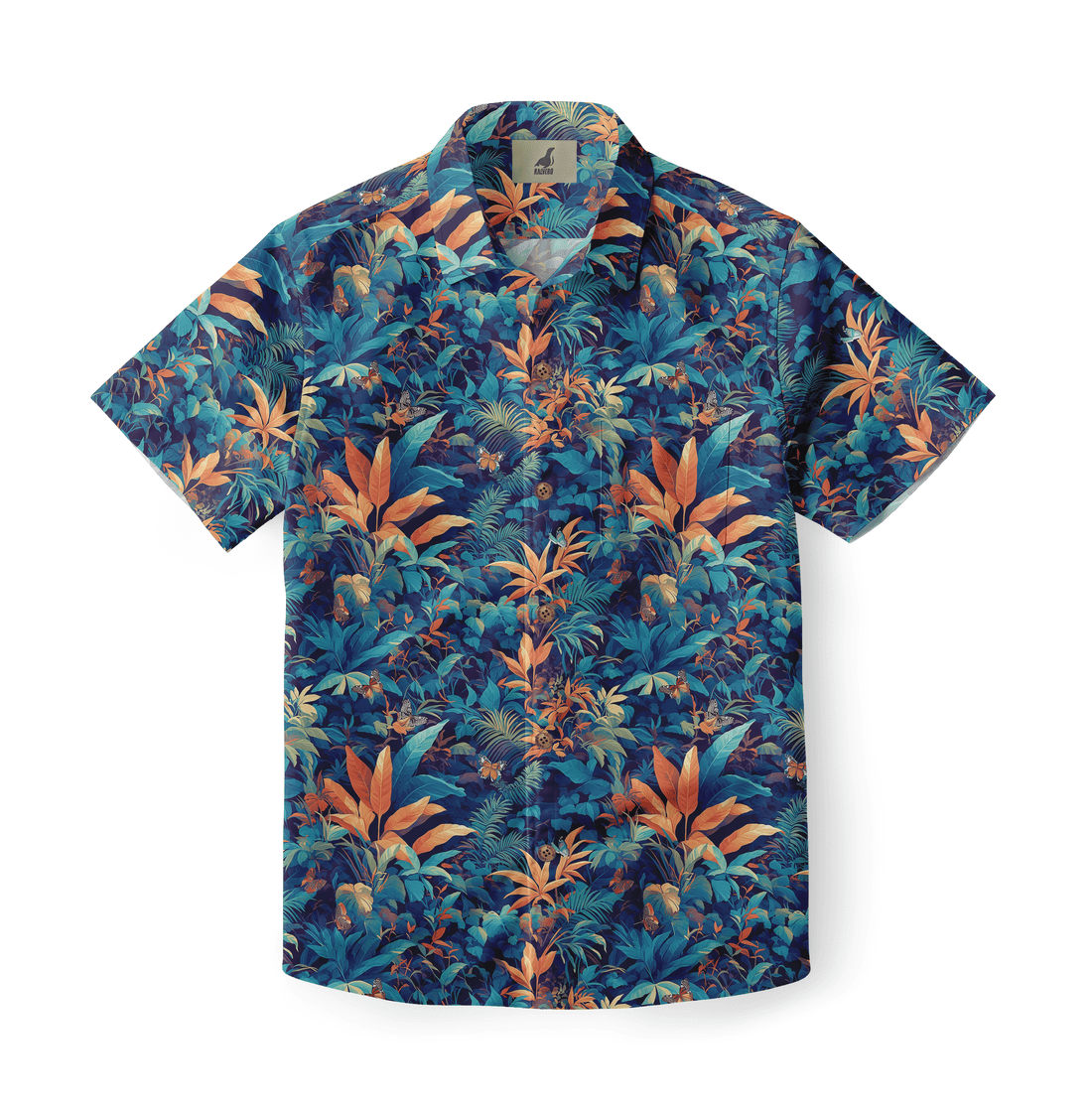The rich tapestry of Hawaiian culture outfits represents centuries of tradition, innovation, and cultural exchange in the Pacific islands. These distinctive garments not only serve practical purposes in Hawaii's tropical climate but also embody deep cultural significance, historical narratives, and artistic expression. From the pre-colonial era to contemporary fashion scenes, Hawaiian clothing has evolved while maintaining its unique identity and cultural importance. Understanding these traditional garments offers insight into Hawaiian heritage, values, and the ongoing dialogue between tradition and modernity in Pacific Islander communities.
The Historical Evolution of Hawaiian Culture Outfits
Before Western contact, native Hawaiians crafted clothing from natural materials found abundantly throughout the islands. Men typically wore the malo, a loincloth made from kapa (bark cloth), while women wore the pa'u, a wrapped skirt also crafted from kapa. These garments were not merely functional but carried significant cultural meaning, with designs and patterns often indicating social status, family lineage, or specific ceremonial purposes.
The arrival of missionaries in the 1820s dramatically transformed Hawaiian clothing traditions. Western concepts of modesty led to the introduction of more covered styles, including holoku dresses for women and long-sleeved shirts for men. Despite this cultural imposition, Hawaiians adapted these new styles creatively, incorporating traditional elements and developing unique hybrid garments that reflected both indigenous values and new influences.
By the early 20th century, the foundations of modern Hawaiian fashion had emerged, blending traditional motifs with contemporary silhouettes. This period saw the birth of iconic Hawaiian culture outfits like the aloha shirt and the modern muumuu, which would later become globally recognized symbols of island identity and lifestyle.
Traditional Hawaiian Culture Outfits and Their Significance
Traditional Hawaiian culture outfits encompass a range of garments that served both practical and ceremonial functions. The kapa cloth, made by beating the inner bark of paper mulberry trees, formed the foundation of pre-contact Hawaiian clothing. Women skilled in kapa-making would create intricate patterns using natural dyes and stamps, producing textiles that were both functional and aesthetically significant.
For ceremonial occasions, Hawaiians created elaborate garments that reflected their deep connection to nature and spirituality. Chiefs wore magnificent feather capes and helmets (ahu'ula and mahiole) made from thousands of colorful bird feathers, symbolizing their divine authority and connection to the gods. These precious garments required immense resources and skilled craftsmanship, making them powerful symbols of status and prestige.
The cultural significance of these outfits extended beyond their visual appeal. Many traditional garments were created with specific protocols and prayers, imbuing them with mana (spiritual power). The process of creating and wearing these garments connected Hawaiians to their ancestors, gods, and natural environment, reinforcing cultural identity and community bonds across generations.
Popular Types of Hawaiian Culture Outfits
Among the most recognizable Hawaiian culture outfits is the pa'u skirt, traditionally worn by women for hula performances and ceremonial occasions. Originally made from kapa cloth, modern pa'u skirts are typically crafted from cotton or other natural fibers, often featuring vibrant floral prints or traditional Hawaiian motifs. The pa'u is not merely decorative but tells stories through its patterns and the way it moves during dance performances.
The muumuu dress represents another iconic element of Hawaiian fashion. Introduced by missionaries as a modest garment for Hawaiian women, the muumuu evolved from a simple, shapeless dress into a versatile garment available in countless styles, colors, and patterns. Today's muumuu ranges from casual everyday wear to elegant formal attire, demonstrating how Hawaiian culture continuously adapts while maintaining its distinctive character.
For men, the aloha shirt stands as perhaps the most globally recognized Hawaiian garment. Developed in the 1920s and 1930s, these colorful shirts featuring tropical motifs became popular among locals and tourists alike. Beyond their aesthetic appeal, aloha shirts embody the cultural value of "aloha" – love, peace, and compassion – and have become powerful symbols of Hawaiian identity in global contexts.
The holoku, a formal Hawaiian gown with a train, represents the height of elegance in traditional women's attire. Worn for significant cultural celebrations and formal events, the holoku combines Western silhouettes with distinctly Hawaiian elements, exemplifying the creative cultural synthesis that characterizes Hawaiian fashion history.
Materials and Craftsmanship in Hawaiian Culture Outfits
The materials used in creating Hawaiian culture outfits reflect the islands' natural abundance and Hawaiians' intimate knowledge of their environment. Traditional craftspeople utilized resources like wauke (paper mulberry) for kapa cloth, lauhala (pandanus leaves) for mats and hats, and olonā fibers for cordage. Natural dyes derived from plants, earth, and sea creatures provided vibrant colors that connected garments to the Hawaiian landscape.
Contemporary Hawaiian designers honor these traditions while incorporating modern materials and techniques. Many artisans are reviving traditional craftsmanship methods, learning ancient skills like kapa-making and featherwork to preserve cultural knowledge. This revival movement emphasizes sustainable practices, using locally sourced materials and natural dyes that minimize environmental impact while maintaining cultural authenticity.
The craftsmanship involved in creating Hawaiian garments requires not only technical skill but cultural knowledge. Traditional patterns and motifs carry specific meanings, and their proper execution demands understanding of Hawaiian values, stories, and protocols. Master craftspeople often serve as cultural repositories, passing down not just techniques but the cultural context that gives these garments their deeper significance.
Hawaiian Culture Outfits in Ceremonies and Celebrations
In Hawaiian weddings, traditional attire plays a central role in honoring cultural heritage. Brides may wear white holoku gowns adorned with lei, while grooms often don white aloha shirts with maile lei. These garments, combined with traditional ceremonies like the exchange of lei and kāhili (feather standards), create a powerful connection to Hawaiian ancestry and values.
Hula performances represent another context where traditional Hawaiian culture outfits take center stage. Dancers wear specific garments depending on the type of hula being performed. For hula kahiko (ancient hula), performers might wear pa'u skirts, kīhei (shawls), and natural adornments like lei, anklets, and bracelets made from native plants. These costumes are not merely decorative but integral to the storytelling function of hula.
The creation and wearing of lei constitutes an important clothing tradition in itself. These garlands, made from flowers, leaves, shells, seeds, or feathers, are worn around the neck, on the head, or on the wrists and ankles. Each type of lei carries specific cultural meanings and is appropriate for different occasions, from casual celebrations to solemn ceremonies honoring deities or ancestors.
Modern Adaptations of Hawaiian Culture Outfits
Today's fashion designers draw inspiration from traditional Hawaiian garments while creating contemporary pieces that appeal to modern sensibilities. High-end fashion houses and local Hawaiian designers alike incorporate elements like tropical prints, traditional motifs, and flowing silhouettes into clothing lines that honor Hawaiian heritage while participating in global fashion conversations.
The influence of Hawaiian culture outfits extends far beyond the islands, with "tropical" and "resort wear" fashion categories heavily influenced by Hawaiian aesthetics. This global impact speaks to the universal appeal of Hawaiian design principles: comfort, vibrant natural imagery, and a celebration of the relationship between humans and their environment.
Ethical considerations have become increasingly important in contemporary Hawaiian fashion. Many designers emphasize cultural respect, ensuring that sacred symbols and patterns are used appropriately. There's also growing attention to sustainability, with brands using eco-friendly materials and production methods that honor the Hawaiian value of mālama 'āina (caring for the land).
Essential Elements of Authentic Hawaiian Culture Outfits
1.Natural materials sourced from the Hawaiian environment
2.Cultural motifs and patterns with specific meanings and stories
3.Comfortable, flowing designs suited to the tropical climate
4.Vibrant colors reflecting the natural landscape of Hawaii
5.Handcrafted elements showing skilled artisanship
6.Appropriate cultural context for ceremonial garments
7.Sustainable production methods honoring Hawaiian values
The authenticity of Hawaiian culture outfits goes beyond mere appearance to encompass the values, stories, and traditions embedded within each garment. These essential elements connect wearers to the rich cultural heritage of Hawaii, fostering a deeper appreciation for the craftsmanship and meaning behind traditional clothing. By understanding these components, both Hawaiians and visitors can better recognize and respect the cultural significance of these distinctive garments, ensuring that Hawaiian fashion traditions continue to thrive in contemporary contexts while maintaining their cultural integrity.
Traditional vs. Modern Hawaiian Culture Outfits
| Aspect | Traditional Outfits | Modern Adaptations |
| Materials | Kapa cloth, natural fibers, feathers | Cotton, silk, synthetic blends, sustainable alternatives |
| Production | Hand-crafted with traditional techniques | Combination of handcraft and machine production |
| Design Elements | Geometric patterns, natural motifs | Traditional elements mixed with contemporary fashion trends |
| Cultural Context | Specific ceremonial and practical purposes | Everyday wear, fashion statements, cultural celebrations |
| Accessibility | Created by and for Hawaiian community | Available globally through commercial production |
| Sustainability | Naturally biodegradable materials | Varies from fast fashion to eco-conscious production |
The evolution from traditional to modern Hawaiian culture outfits reflects broader changes in Hawaiian society while demonstrating remarkable cultural resilience. Despite centuries of external influence and commercial adaptation, core elements of Hawaiian clothing traditions remain vibrant and meaningful. Contemporary designers and cultural practitioners navigate complex questions of authenticity, appropriation, and innovation, seeking ways to honor traditional practices while creating garments relevant to modern life. This ongoing dialogue between past and present ensures that Hawaiian fashion continues to serve as a powerful expression of cultural identity, adapting to changing circumstances while maintaining connections to ancestral knowledge and values.
Frequently Asked Questions About Hawaiian Culture Outfits
What is the significance of patterns and colors in traditional Hawaiian clothing?
Patterns and colors in traditional Hawaiian clothing often carry specific cultural meanings. Geometric designs might represent family lineages or natural elements like mountains, ocean waves, or plant life. Colors derived from natural dyes connect garments to the Hawaiian landscape, with red often symbolizing royalty or divine power, yellow representing joy and prosperity, and black or dark blue used for ceremonial or sacred contexts. These visual elements serve as a form of non-verbal communication, conveying information about the wearer's identity, status, and the purpose of specific ceremonies or celebrations.
How can visitors respectfully appreciate Hawaiian culture outfits without appropriation?
Visitors can respectfully appreciate Hawaiian culture outfits by learning about their history and significance, purchasing from Native Hawaiian artisans and businesses, and wearing appropriate garments in suitable contexts. Aloha shirts and casual muumuu dresses are generally acceptable for tourists, while ceremonial garments should be approached with greater sensitivity. Avoid wearing sacred symbols or misusing items with specific cultural significance. When purchasing Hawaiian clothing, seek authentic pieces that fairly compensate Hawaiian creators rather than mass-produced imitations that appropriate cultural elements without proper understanding or respect.
How are traditional Hawaiian clothing-making techniques being preserved today?
Traditional Hawaiian clothing-making techniques are being preserved through cultural education programs, apprenticeships with master craftspeople, and institutional support from museums and cultural organizations. Kapa-making workshops, hula schools teaching traditional costume creation, and university programs in Hawaiian studies all contribute to maintaining these practices. Digital documentation projects are also capturing the knowledge of elder practitioners, creating resources for future generations. Additionally, contemporary Hawaiian designers often incorporate traditional techniques into their work, creating economic opportunities that support cultural preservation while introducing these practices to new audiences.
Conclusion
The journey through the world of Hawaiian culture outfits reveals much more than mere clothing—it illuminates a living tradition that continues to evolve while maintaining deep connections to Hawaiian values, history, and identity. From the practical simplicity of pre-contact garments to the vibrant diversity of contemporary Hawaiian fashion, these distinctive outfits embody the resilience and creativity of Hawaiian culture through centuries of change.
As global interest in Hawaiian fashion grows, questions of cultural respect and authenticity become increasingly important. Responsible engagement with Hawaiian culture outfits requires understanding their deeper significance and supporting practices that honor their origins. By appreciating these garments not just as aesthetic objects but as expressions of cultural knowledge and identity, we contribute to a more respectful and sustainable relationship with Hawaiian heritage.
The future of Hawaiian fashion lies in this balance between innovation and tradition—creating garments that speak to contemporary needs and sensibilities while honoring the cultural foundations that give them meaning. Through this ongoing dialogue between past and present, Hawaiian culture outfits will continue to serve as powerful symbols of identity, creativity, and cultural pride for generations to come.








